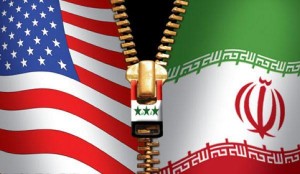 BRUSSELS, — Speaking anonymity to Inter Press Service (IPS), a ‘reliable’ Iranian source said; “The U.S. forces observed the fighting from the air and did nothing to stop it. There was good coordination [between Iran and the United States] to destroy the ‘terrorist’ organization,” AND reported.
BRUSSELS, — Speaking anonymity to Inter Press Service (IPS), a ‘reliable’ Iranian source said; “The U.S. forces observed the fighting from the air and did nothing to stop it. There was good coordination [between Iran and the United States] to destroy the ‘terrorist’ organization,” AND reported.
While the Iranian operation continues near and across the Southern Kurdistan since July 16, the “dirty relations” behind the Iranian aggression are coming to light with each passing day. While documents introduced the “operation alliance” between Iraq-Iran-Turkey and the Kurdistan Regional Government, an Iranian source has confirmed the U.S. military presence in the Iranian operation.
IPS commented the situation as; “Iran and the United States don’t agree on much these days, but there are a few views they hold in common”.
Also speaking on condition of anonymity, an Iraqi Kurdish official denied the allegation and claimed that the United States would be more inclined to back PJAK because “it’s anti-Iran”. The news pointed out that George Little, the chief Pentagon spokesman, made no comment when asked if the U.S. had, at a minimum, condoned Iranian attacks on three PJAK camps.
The report noted that Little also declined to comment on any possible links between the Iranian Kurdish operation and a recent increase in attacks on U.S. forces in Iraq by Iran-backed Iraqi Shiite militants.
Speaking to IPS news agency, Patrick Clawson, a Middle East expert at The Washington Institute for Near East Policy, said U.S. tacit approval for the Iranian raids was “entirely plausible” given U.S. opposition to Kurdish militants. Clawson said; “The U.S. was signaling the Kurdistan Regional Government that it can’t just let this problem fester”.
OPERATIONS WITHIN THE THIRD WEEK
The operation of the Iranian army, launched at the border line and Qendil in particular on July 16, was expanded to the Xinere and Xakurk line in the next few days. During the operations carried out in an area of 10-15 km, villages in South Kurdistan were targeted with intense artillery shootings, which cause at least three villagers lose their lives and 11 get wounded. In addition, according to the sources of Kurdish government, 35 villages were damaged and hundreds of people were subjected to migration.
The hidden side of the aggression started to become clear after the operation was launched. According to information received, the Kurdish government and the Iranian state made an agreement on the operation on 28 January 2011 which aimed to inactivate and expulse the PKK and PJAK from South Kurdistan and to settle Southern forces in the region.
Showing reaction to the Iranian and Turkish bombardments in Federal Region of Kurdistan, Mahmud Osman, a member of Kurdistan Alliance of Fractions in the Iraqi Parliament, had told about the border security that the possibility of a secret agreement between Turkey, Iran and Iraq was too high. In another statement, Osman had drawn attention that the U.S. is a party to the war against Kurds. Osman noted that the U.S. takes sides with Turkey on the subject and delivers the intelligence it provides to Turkey, which delivers them to Iran afterwards. Osman showed reaction that the U.S. is remaining silent against the bombardment of Iran and Turkey while it is so-called responsible for protecting Iraq and its borders from both air and land.
KARAYILAN: TURKEY, IRAN AND THE U.S. COALESCE
In an interview to ANF, KCK Executive Council President Murat Karayilan had made an emphasis on the alliance of the U.S., Turkey and Iran in the conducted operation; “Iran is attacking Qendil now and American reconnaissance aircrafts are flying on Qendil since the operation. What are these explorations? Some may say that these aircrafts are watching Iran but they aren’t because they are flying on the inside part of the border. These explorations are reported to Turkey and then to Iran. There is a truth now; Turkey, Iran and America have coalesced.”
TURKISH-IRANIAN ALLIANCE
On the other side, the Turkish-Iranian alliance became clear with the military mobility at the border and when five Turkish commandos in the Iranian army were killed during the operations against PJAK in last week of July.
Village-guard Sileyman Cahidi, who spoke to ANF about the clash, said; “I saw it with my own eyes that five bodies covered with Turkish flags were brought to the Gire Şeytan village of Piranshar. Their hands had turned to black and blue and there were bullet Marks on their heads. The bodies were taken to the trucks that transport frozen meat.”
Moreover, it was formerly reported that 300 commandos of the Turkish army crossed the Iranian border with military vehicles on July 21. Four days later, on July 25, it was reported that 20 Turkish tanks passed to Iranian territory.